These up-front considerations can help you get the most out of your next linear motion project
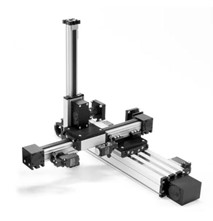
Consider the big picture
When engineers are designing an electro-mechanical system that utilizes electric linear actuators versus other technologies such as hydraulics or pneumatics, there can be multiple ways to solve one application. All variations differ in accuracy, performance, space (footprint), total cost of ownership, and many other factors. Before deciding on the type of electric linear actuator to be used for a given project, it is very important to consider the big picture of your operations and objectives (and not just focus on product specifications alone). Doing this will ultimately maximize ROI on your equipment investment while speeding up your time to market.

6 Tips to Know Before Buying Your Linear Actuator
Have you and your equipment design team been looking for a reliable linear actuator for your next project? When safety, efficiency, and performance are on the line, you will need to set aside time for research before making a purchase. It is also important to consider the distinct advantages that modern electromechanical actuators have over traditional hydraulic or pneumatic powered actuators. Selecting the right actuator for the job up front can also facilitate a faster time-to-market and you will get the most benefit long-term as your equipment and facility needs evolve.
1. Environment and Safety.
Electromechanical actuators are safer and better for the environment.
Selecting the right device can more effectively prevent accidents in your facility and for your customers. In addition, their designs place less stress on the environment.
- Unlike their hydraulic and pneumatic counterparts, electromechanical actuators do not require bulky support systems such as fluids, oils, hoses, and pumps. This eliminates the risk of dangerous leaks that can create slip hazards and environmental contamination (the processes to manage such instances are also very costly).
- Electromechanical actuators are self-contained devices that only require minimal periodic lubrication (internal to the sealed device). There are no harmful or dangerous fluids that can leak into the environment.
- Electromechanical actuators are >90% efficient, thus they consume less energy, and are thus more environmentally friendly (less strain on resources).
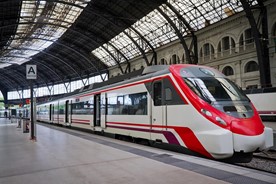
2. Consider the Total Cost of Operation to Maximize ROI.
Other technologies may appear to be initially more cost effective. However, electromechanical actuators clearly provide the best long term investment.
- There is increased direct control over the motion profiles of electromechanical actuators. This eliminates the need for extra add-on control components (reducing equipment costs). Changes in adjustment are easily managed with software changes (reducing support costs).
- Cleaner operation, less maintenance, and longer operating life ultimately drive down the long term operating costs.
- Electromechanical actuators are >90% efficient. This in turn, drives down power consumption and reduces energy costs.
3. Consult with a Linear Motion Support Team Before Making a Purchase.
The linear actuator selection process can be overwhelming... Why struggle unnecessarily?
- A potential linear motion partner may already have a solution already waiting to resolve your problem.
- Leverage the proven experience and capability of a dedicated and accessible linear motion Design Team.
- There are often multiple ways that electric linear actuators can solve a given application problem. Each can have different performance and budgetary impacts. Consulting a linear motion expert early in the development process can quickly direct you to the optimal solution for our individual needs.
Explore Nook Engineering Capability
4. Fully Understand the Operating Conditions.
Will the equipment need to operate in any extreme conditions?
It is important to select the proper materials and features that are best suited to the linear actuator's operation environment.
- Is it an indoor or outdoor application?
- What are the temperature requirements (Heat, Cold, Moisture)
- What are the cleanliness requirements (Clean Room, Dirty, etc...)?
- Does it need to be explosion-proof?
- Are they susceptible to corrosion?
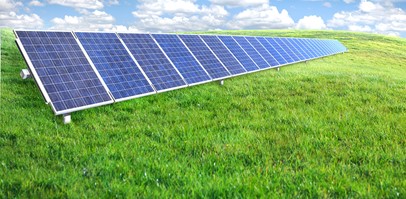
5. Consider the Facility Requirements and Future State of Your Design.
If possible, determine any needed flexibility or expansion of your system going forward. Optimize the long term strategy as much as possible early in development.
- What are the current and future floor space/layout limitations?
- What additional functionality will be required down the road?
- Electromechanical linear actuators consume less floor space because they are self-contained and do not require external supporting equipment such as air lines, hoses, fluids, and compressors or pumps.
- Electric linear actuators adapt well to change because they are easily programmed and some versions are highly re-configurable.
Nook's Modular Linear Actuator product line is ideal for optimizing existing and future layout requirements. They can easily be configured and re-configured in order to best meet the evolution of your process and equipment. However, in general all self contained electromechanical actuator product lines are better suited for applications with space limitations.
6. How will the linear actuator interact with the entire system?
Significantly reduce your development cycle by planning out your complete linear motion system in advance. Specifically, how the electronics will interface with the mechanics.
- What type of drive is needed? (Servo, Stepper, or AC Motor, etc...)
- How precise is the positioning requirement?
- What sensing is required (Limit Switches, Encoders, etc...)
- How does it need to be mounted?
- Does it require safety protections?
Consider using a linear motion provider that supplies complete solutions.
Different types of electric linear actuators include:
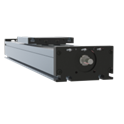
Modular Linear Actuator - Great for XYZ positioning duties.
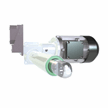
Electric Cylinder - Excellent for heavy duty and outdoor applications.
Programmable Actuator - Perfect when accurate positioning and control is a must.
CC Commercial Actuators - Ideal for low cost, lighter load applications.
Are you considering Electric Linear Actuators as a replacement for Hydraulics or Pneumatic driven linear devices?


